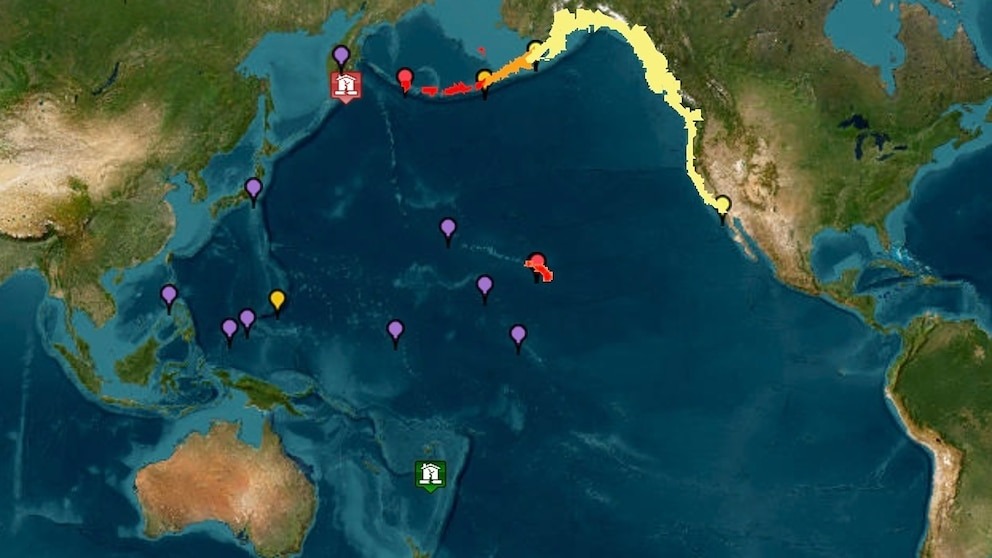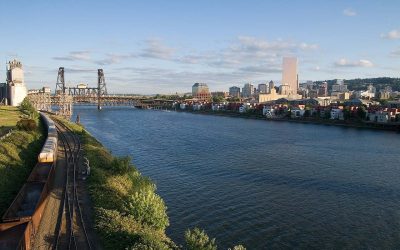Late Monday night, a massive magnitude 8.8 earthquake struck off Russia’s Kamchatka Peninsula, shaking up the Pacific Rim and triggering tsunami alerts from Alaska to California—including watches and warnings for the Oregon Coast.
According to the U.S. Geological Survey, the powerful quake hit at 7:24 p.m. ET (4:24 p.m. PT), centered roughly 78 miles southeast of Petropavlovsk-Kamchatsky, Russia, at a depth of just 12 miles. The quake generated multiple strong aftershocks, some as high as magnitude 6.9.
While Hawaii and Alaska’s Aleutian Islands were placed under tsunami warnings, the West Coast of the U.S.—including Oregon—was placed under a tsunami watch, meaning coastal areas from Brookings to Astoria were being closely monitored for potential wave activity.
What This Means for Oregon
According to the National Tsunami Warning Center, the earliest estimated arrival of potential tsunami activity for Oregon could begin around 11:40 p.m. PT, with projected wave activity for:
- Port Orford – 11:40 p.m.
- Charleston – 11:45 p.m.
- Brookings – 11:50 p.m.
- Seaside & Newport – 11:55 p.m.
While current projections suggest wave heights may be under 1 foot in some areas, officials are warning of strong and unpredictable currents, especially near beaches, harbors, and inlets.
"Even small tsunamis can produce dangerous conditions," said a National Weather Service meteorologist. "We urge Oregonians to stay off beaches and avoid coastal recreation until the advisory is lifted."
At around 4pm today, an 8.8 magnitude earthquake occurred off the shore of Russia. Tsunami warnings have now been issued for the entire Pacific coast. So what should you do to prepare you and your family for a potential tsunami?
— Red Cross Cascades (@RedCrossCasc) July 30, 2025
1️⃣ If you live in a tsunami hazard zone, make a… pic.twitter.com/XUIX8RHveY
President Trump Issues Statement
President Donald Trump took to social media platform X, warning Americans on the West Coast and in Hawaii to stay alert:
“A Tsunami Watch is in effect for Alaska and the Pacific Coast of the United States… STAY STRONG AND STAY SAFE!”
Coastal Communities Urged to Take Precautions
In Oregon, no evacuations have been officially ordered as of publication, but emergency services are monitoring the situation. Local officials from Curry, Coos, Lincoln, Tillamook, and Clatsop counties are prepared to act if threat levels rise.
Residents are reminded:
- Do not go to the coast to watch the tsunami.
- Stay away from beaches, rivers, marinas, and docks.
- Listen to local emergency alerts and weather updates.
How Are Tsunamis Tracked?
Oregon's vulnerability to tsunamis is a well-known risk. Monitoring relies on NOAA’s DART system—Deep-ocean Assessment and Reporting of Tsunamis—which uses deep-sea buoys to track waves in real-time. These buoys help determine wave size and direction long before they reach land.
Unfortunately, the NOAA lab responsible for these systems—based in Washington state—is currently facing potential budget cuts, raising concerns about future tsunami forecasting capabilities.
Russia, Japan Also on Alert
In Russia, waves reportedly reached up to 13 feet, damaging buildings and prompting widespread evacuations. Japanese officials also issued tsunami warnings, bracing for waves up to 10 feet.
The Pacific islands, including Guam and American Samoa, are likewise under advisories.
Oregon’s Long Memory of Tsunami Risk
While this event is rooted in a far-off seismic zone, Oregonians know all too well the dangers tsunamis pose. From the 1964 Alaska quake that devastated parts of Crescent City, California, to our own looming threat from the Cascadia Subduction Zone, this latest event is a reminder of the region’s need for preparedness and awareness.
Stay safe and stay informed. We’ll update this story as more information becomes available.
For real-time alerts and evacuation info, visit: www.Tsunami.gov













